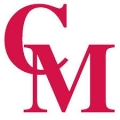Theoria on 5 Differences Between the Roman Catholic Church and the Eastern Orthodox Church

Fr. Andrew Stephen Damick lists 5 differences between the Roman Catholic Church and the Eastern Orthodox Church – can you think of any more?
Comments
-
Great Schism (1054)
Why did Eastern Orthodox and Roman Catholic churches split in 1054 A.D.? This video explores the political, cultural and theological issues between Eastern and Catholic faiths. For example, what is filioque and why was it important? What caused the Eastern Patriarch and the pope to fight? All of this is covered in this video in the Great Schism of 1054.
Ryan M. Reeves (PhD Cambridge) is Assistant Professor of Historical Theology at Gordon-Conwell Theological Seminary.
-
Mitchell,
Thanks, for the clip that highlights the Spirit’s ROLE AND FUNCTION in the Godhead, NOT His status or rank. I may have given a bit more than the clip or what you wanted to bring out. So, take what you can and I will understand.History proved that the Christian Church stayed generally united for centuries. The first major break came in A.D. 1054 over the "filioque controversy" when the Eastern (now Orthodox) church broke away from the Western (Roman Catholic) church.
Even though during the Middle Ages the Spirit was fully accepted as equal to God, confusion continued. The trouble reflected past controversies over Christology regarding the exact origin of the Spirit: Was He from God the Father or from the Son or from both?
All was quiet in the West until the Eastern Church discovered the now famous filioque clause in 1014. Although the addition was discovered and made something about in 1014, the action had taken place nearly 500 years before, at the Third Council of Toledo, Spain, in AD 589, at a gathering of only Latin ecclesiastics. It was believed that Charlemagne had also approved of the filioqueaddition.
The Nicene Creed added the word filioque—Latin for “and the Son”—stating that the Holy Spirit proceeded “from the Father and the Son.” One should note: “When the Helper comes, whom I will send to you from the Father, that is the Spirit of truth, who proceeds from the Father, He will bear witness of Me” (John 15:26). This text gave credibility to the filioque clause inserted in the Nicene Creed, since the Spirit is sent by the Son, and yet also proceeds from the Father.
The Eastern Church, already upset at the supremacy of Rome in the Church Catholic, and fully holding to the concept that the Father alone was the sole fountain, root, and cause of deity, would not stand for such “treason.”
The "filioque controversy" became the greatest theological disagreement in the history of the Christian church. This led to the permanent rift between the Eastern and the Western Church: The Great Schism of 1054.
Sources:
-- Gary D. Badcock, “Doctrine of the Holy Spirit,” in Dictionary Theological Interpretation of the Bible, ed. Kevin J. Vanhoozer (Grand Rapids: Baker, 2005), 305.-- Williston Walker, A History of the Christian Church, 3rd ed. (New York: Charles Scribner’s Sons, 1970), 189, 164.
PS. “Anathemas were pronounced against Arianism, Nestorianism, Manichaeanism, Filioque Controversy, Sola Fide and other Protestant doctrines, modern Liberalism, and denial of Papal Infallibility”. (See, Anderson TL 2002. Is Anathematization a Tool for the Evangelical Theologian Today? A Dissertation. Deerfield: Timothy L. Anderson). [CM]
-
Excellent video. Interesting, informative, sad and relevant to today.
-
A little more on "filioque" and The East-West Split:
What caused the Catholic and Orthodox Churches to split?
- It was partly doctrinal (the “Filioque” Clause).
- Also, it was largely influenced by cultural differences between the East and the West.
- There was a struggle for power among the leaders of the two groups.
Both the eastern and western churches relied heavily on forms rather than functions. How they went through the motions of worship meant more to them than what they believed.
There emerged two very different forms of Christian worship—one in the East and one in the West.
Notice this appreciation of form when emissaries reported in 987 AD to Vladimir, Grand Duke of Kiev, on the Orthodox faith in Constantinople:
“The Greeks led us to the edifices where they worship their God, and we know not whether we were in heaven or on earth. For on earth there is no such splendor or such beauty, and we are at a loss how to describe it. We only know that God dwells there among men, and their service is fairer than the ceremonies of other nations. For we cannot forget that beauty. Every man, after tasting something sweet, is afterward unwilling to accept that which is bitter, and therefore we cannot dwell longer here.”
In sum, the split was due to doctrine, culture difference, and Leadership power. CM
SOURCES
Russian Primary Chronicle: Laurentian Text, Samuel H. Cross. N.p., n.d.


